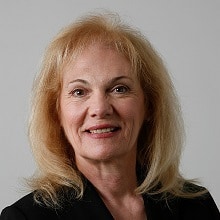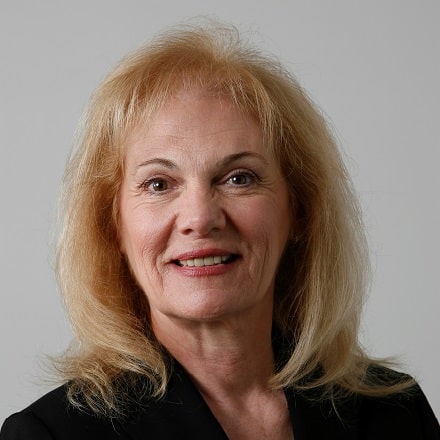Inside Angle
From 3M Health Information Systems
Mammograms and Modifier 52
In late December 2017, I was asked by a colleague for my opinion on a customer’s inquiry about modifier 52 and its use in mammograms. CPT® modifier 52 represents a “reduced service.” This customer, a large metropolitan hospital, was reporting CPT 77067 “screening mammography, bilateral (two-view study of each breast), including computer–aided detection (CAD) when performed” or G0202 “screening mammogram, bilateral two views” with modifier 52 when performing screening unilateral mammograms.
Note: G0202 expired as of December 31, 2017 and is replaced with 2017 CPT code 77067 for 2018 and beyond.
From a coding perspective, I was concerned about using a CPT modifier on a HCPCS code. Clinically, the amount of work for a post-mastectomy screening service is about the same as a bilateral, no-history-of-breast-disease screen. However, I appreciate coder logic and the desire to follow the letter of the coding rules. To wit, if the code represents a bilateral service and we are “only” doing a unilateral service, then we should add modifier 52.
Be careful using internet searches
I was curious why the hospital was certain this was correct, so I googled “how to code a screening mammogram for a patient with a mastectomy” and received tons of replies stating modifier 52 is required. From the (undated) FAQ section of the American College of Radiology’s current website I saw the following:
When a screening mammography study is ordered and performed on a patient who has only one breast, it is appropriate to report 77067 or G0202 (Screening mammography, bilateral (2-view study of each breast), including computer-aided detection (CAD) when performed. Because the CPT code descriptor for 77067 and G0202 state “bilateral,” it would be appropriate to use a 52 modifier (reduced level of service) to designate a screening procedure of only one breast. However, radiology practices should check with their local carrier and other third-party payers regarding the use of the 52 modifier in this situation, because some payers have stated that a 52 modifier is not necessary for reporting a unilateral screening mammogram.
Many think, “Well, it’s from the American College of Radiology—a specialty society no less—so I guess I can trust their directions. Plus, there is the whole bit of bilateral versus unilateral. And I guess that means the doc is doing less work? Right? So it must be OK.”
Another search return: “Article for Breast Imaging Mammography/Breast Echography (Sonography)/Breast MRI/Ductography – Supplemental Instructions Article (A48362)” from National Government Services (NGS). The article stated the following:
When modifier 52 is appended to the screening mammography codes 77057 or G0202 and 77052, it would be assumed that the service rendered was a unilateral mammography. The unilateral mammography would be paid at a reduced rate.
But a careful read of the document references ICD-9 codes – no mention of ICD-10 which indicates an old, out-of-date article last updated in 2010. There have been many changes in the medical necessity world in seven years.
The current “Modifier 52 Fact Sheet” from Novitas (updated July 7, 2017) states supporting documentation should include:
- State when the procedure was started
- Explain why the procedure was discontinued
- Notate the percentage of the procedure that was not performed
The fact sheet goes on to provide as an example “…[use modifier 52 when] unilateral mammogram on right breast due to left breast mastectomy.” Hmmmm. The Reference link to Chapter 12 in the publication doesn’t work, a quick scan of the Medicare Claims Processing Manual, Chapter 12 does not contain Sections 40.A.10 in reference to modifier 52. But I did find it in 40.4; this discusses adjudication of claims for global surgeries…nothing to do with radiology or mammograms.
This is how misinformation is spread; rather than word-of-mouth, it’s now word-of-internet.
According to CMS
Accurately assigning modifiers can be a real challenge, as some have confusing instructions. If you look at the CMS Manual System, the instructions for use of modifier 52 states “These modifier are used to report procedures that are discontinued by the physician due to unforeseen circumstances. Modifier 52 is used to indicate partial reduction or discontinuation or radiology procedures and other services that do not require anesthesia.”
Consider the unilateral screening mammogram: Not surgery, not an unforeseen circumstance, not a discontinued procedure. Following the strict modifier instructions, performing a unilateral screening mammogram is a scheduled, expected procedure with full service delivery.
My Take
When I have a service question, my first stop is the CMS National Coverage Determination policies. With the addition of ICD-10 codes, CMS updated many NCD policies by adding codes that represent the policy rules. The mammogram NCD (220.4) does not include instructions to use modifier 52 for unilateral screening mammograms. CMS did not instruct providers to send supporting documentation for the “reduced” service and no mention is made of reducing reimbursement.
Just to be sure, I recently received confirmation from CMS regarding my inquiry about modifier 52:
Adding a modifier -52 will not currently change payment and we do not require it to be used. We’re checking to see what using modifiers –LT or –RT would do re payment. We were advised by our Business Systems area that a modifier LT or RT would not affect payment for these codes (77067, G0202). The payment would be the same whether performed unilaterally or bilaterally
So, according to CMS, there is no need to report modifier 52/LT/RT for CMS unilateral screening mammograms. Every MAC should follow the letter of the NCD since it takes precedence. When researching, be sure to check the revision dates of all citations. If you see something that does not jive with an NCD, query your MAC. Or use medical necessity data from a trusted vendor who provides timely, reliable data to avoid unnecessarily reducing the cost of a service. One important caveat: Always check with your other payers since not all follow the CMS lead.
Barbara Aubry is a senior regulatory analyst for 3M Health Information Systems.
CPT is a registered trademark of the American Medical Association.


